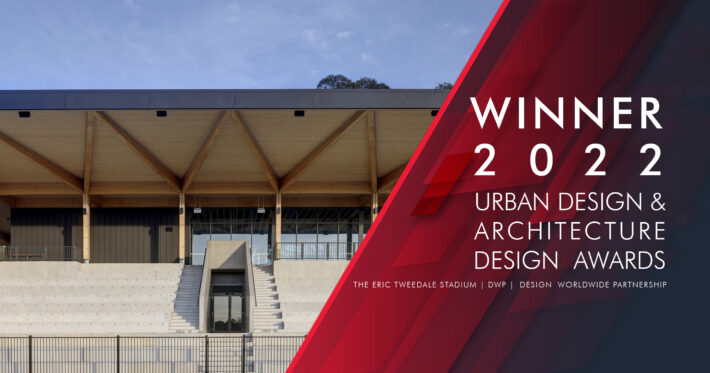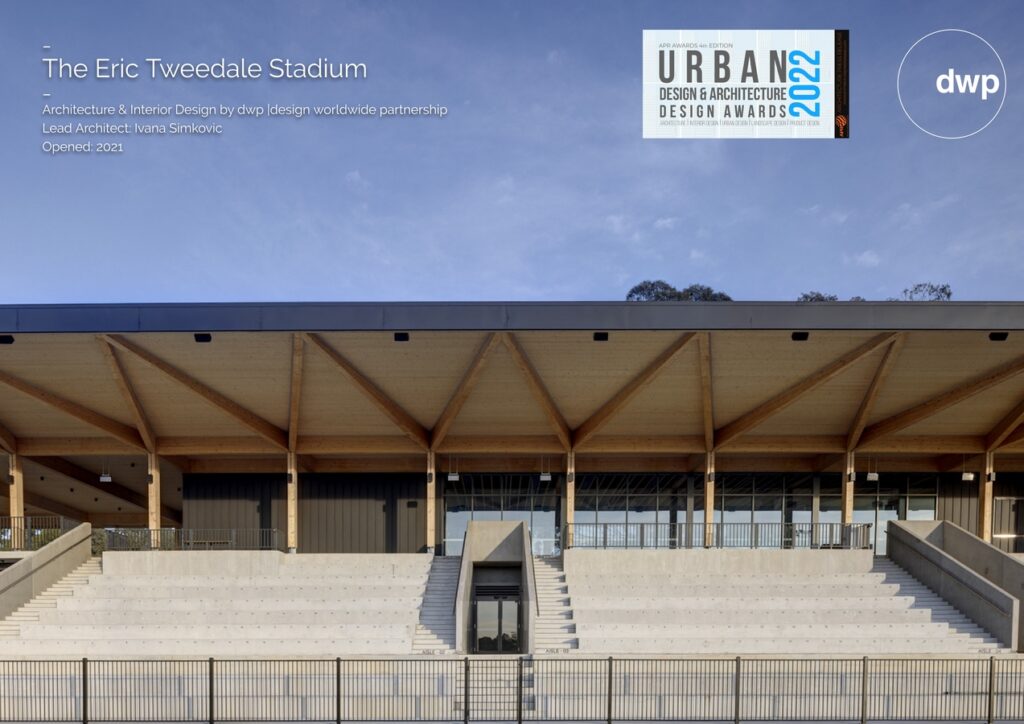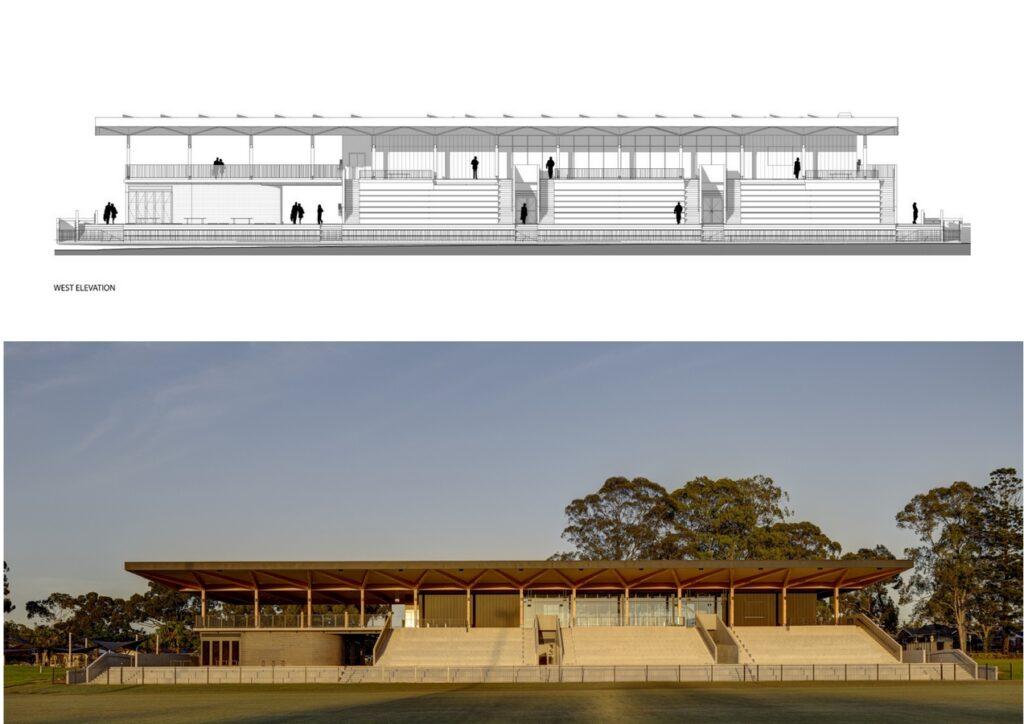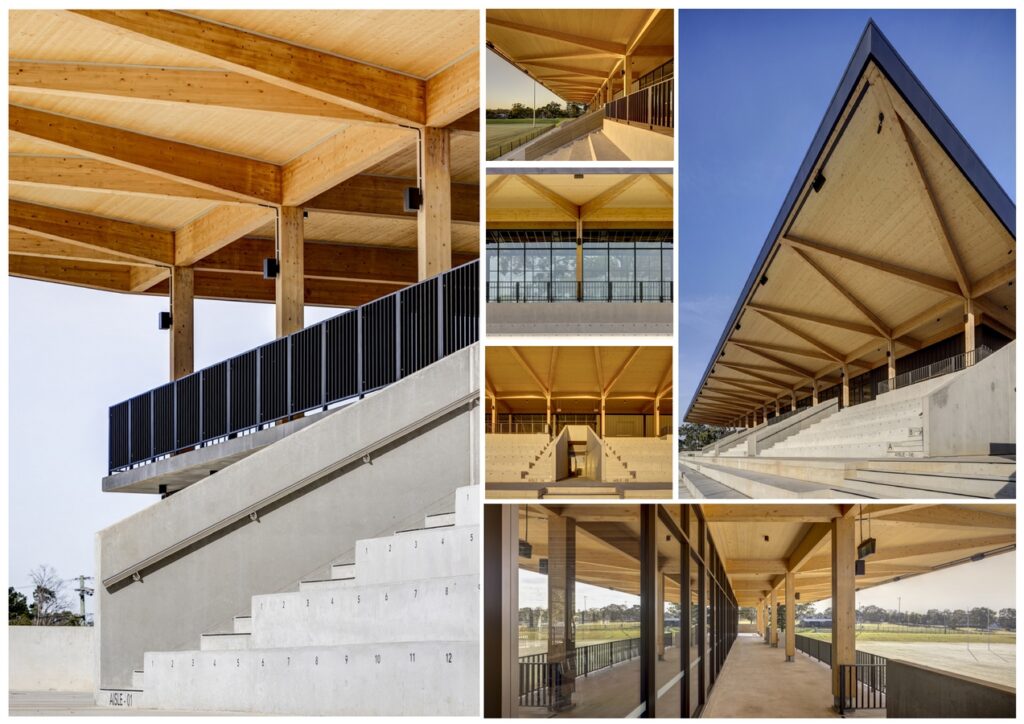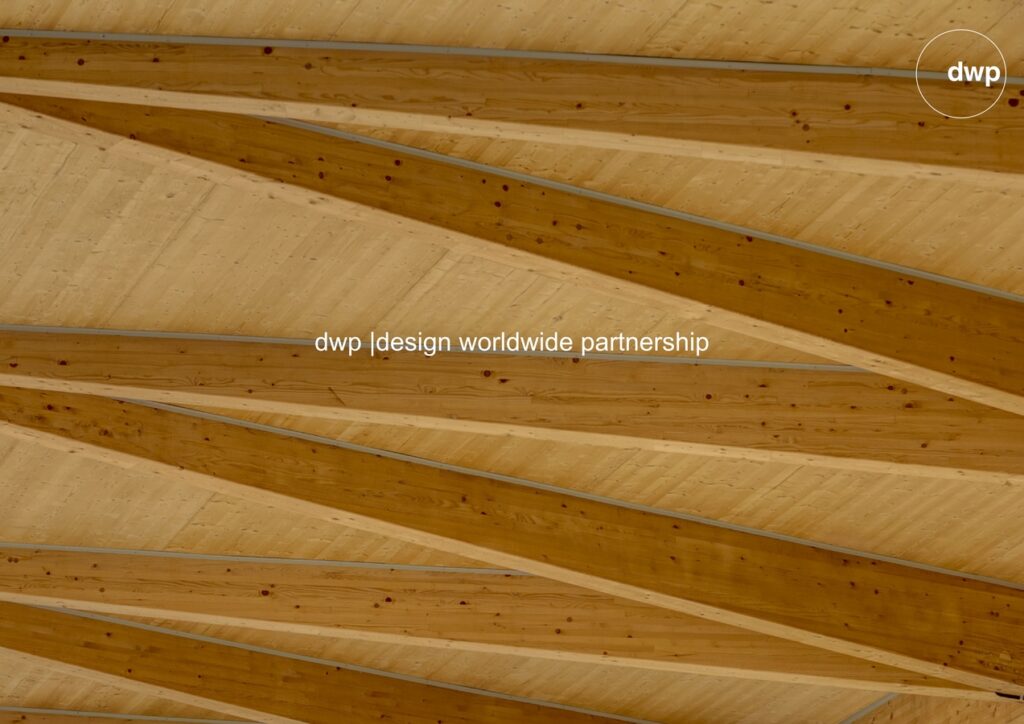The design of the Eric Tweedale Stadium is driven by the stadium’s connection to the local environment and history of the Cumberland Plains. Located within Granville Park, once a widely forested area, its form and materiality respond to the site’s heritage and create a connection to its current sporting environment.
Urban Design & Architecture Design Awards 2023: Discounted Entries Open Now! Save $50
Super Early Discount – 1st May 2022 to 30th June 2022 – $199 = $149
Gold 🏆 Winner
Urban Design & Architecture Design Awards 2022
The Eric Tweedale Stadium
Sports Architecture Built
Firm
dwp | design worldwide partnership
Architect/Designer
Ivana Simkovic
Design Team
Ivana Simkovic – Project Director, Hugh Thomson – Architect, Tiziana Tovar Nino – Architectural Graduate, Carol Leung – Interior Design
Location
Sydney, Australia
Country
Australia
Photographer/Copyright
©Brett Boardman
The Stadium includes a grandstand with change rooms, a multipurpose room, first-floor function space, a commercial kitchen, and an outdoor viewing deck. The glulam roof cantilevers over eight meters over the seating, creating a simple yet impactful and beautiful form that also gives historical reference to the forest that once dominated the site.
Timber rafters and columns are exposed in the interior spaces, bringing a warm earthy glow softening the interior palette.
The use of a mass timber structure in the Stadium is the first use of glulam timber for this type of facility in Australia, representing an impressive achievement in timber engineering.
Sustainable design was an important objective of the project and timber construction was key to achieving this – low carbon, low waste, and high energy efficiency. The timber has great engineering properties, quality in the sense that off-site fabrication provides timber elements measured accurately and made to a millimeter and beautiful aesthetic appeal due to its natural warmth and brightness.
Beyond the low carbon footprint of the timber structure, the stadium has an east-west orientation to allow for natural cross-ventilation of the ground level, passive solar shading achieved with timber roof overhangs, a rainwater tank for irrigation of the landscape as well as rugby pitch and flushing of toilets, and there is provision for photovoltaics over the entire roof and metering to monitor and reduce wastage.
The stadium provides an active contribution to climate protection of around 130t CO2e. This storage effect corresponds to the greenhouse gas emissions of the combustion of 268 barrels of oil, or truck transport over 119,878 ton-kilometers.


